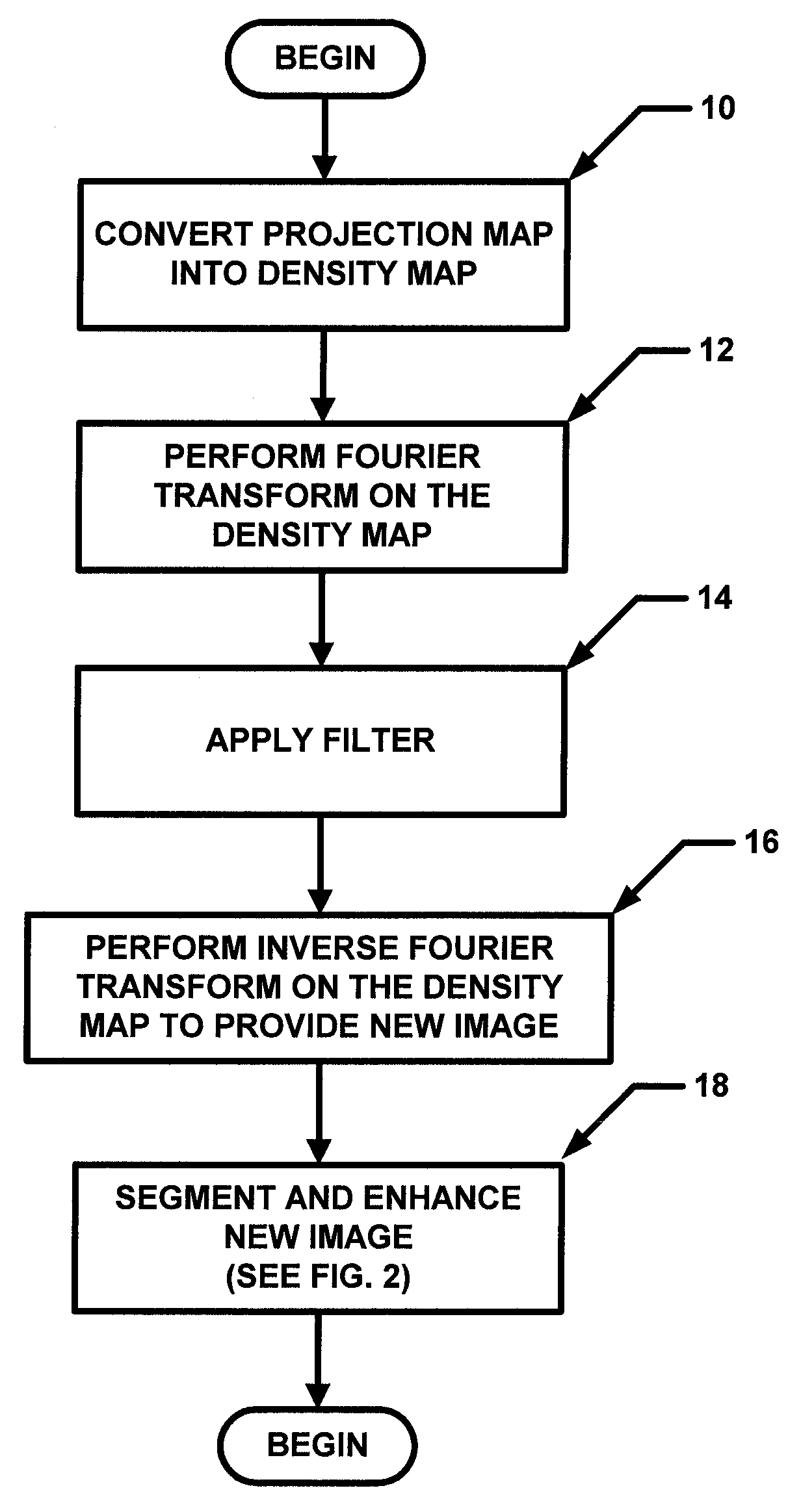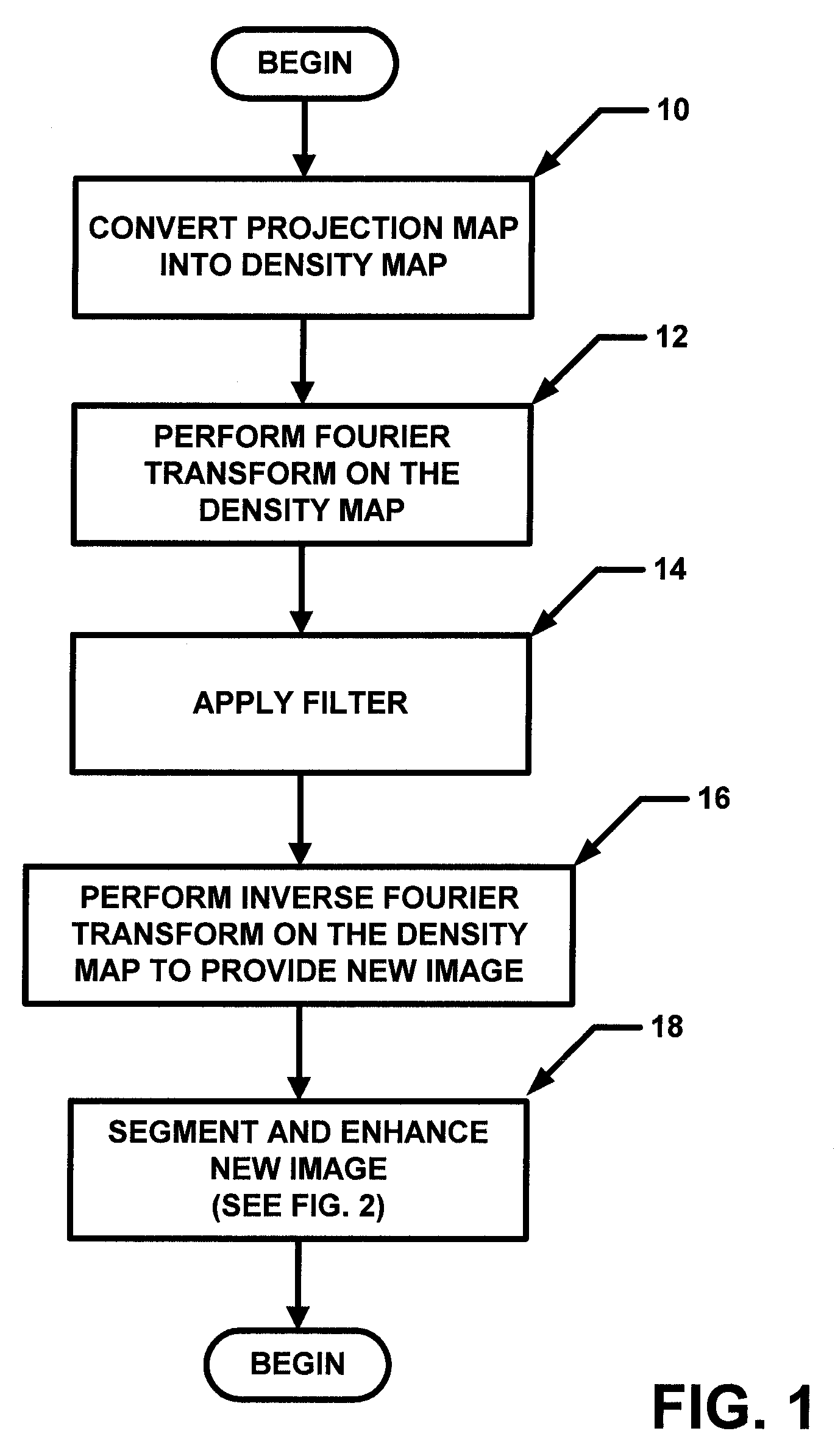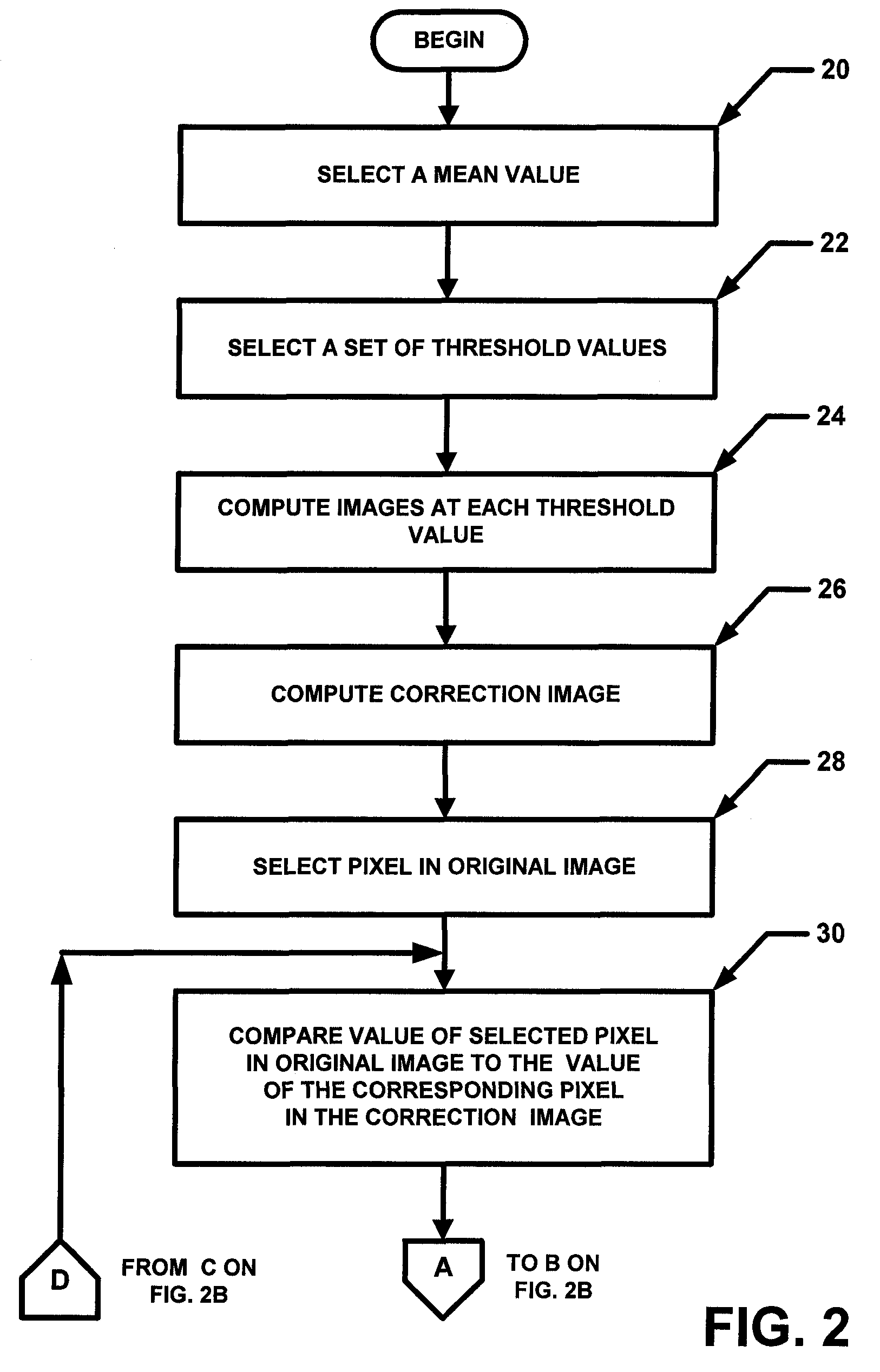Multi-threshold peripheral equalization method and apparatus for digital mammography and breast tomosynthesis
a technology of peripheral equalization and digital mammography, applied in the field of image processing, can solve problems such as unsatisfactory artifacts in images, and achieve the effects of improving image reading and interpretation efficiency, enhancing intensity, and enhancing the peripheral area of breasts
- Summary
- Abstract
- Description
- Claims
- Application Information
AI Technical Summary
Benefits of technology
Problems solved by technology
Method used
Image
Examples
Embodiment Construction
[0019]In general overview, the general concept described herein is to estimate the normalized thickness profile (NTP) of a breast from an image (e.g. a mammogram image) and enhance the peripheral area. This can accomplished by dividing the NTP from the mammogram. In one particular but exemplary embodiment, a projection mammogram was first segmented into “breast” and “background” regions using a threshold value computed using the Otsu technique. A segmentation image (SI) was generated in which pixels were assigned a first value (e.g. value of one) in a breast region and a second value (e.g. a value of zero) in background region. The projection was then converted into an attenuation image (AI). A two-dimensional (2D) low-pass filter was applied to the AI in the spatial frequency domain to obtain a blurred image (BI), which primarily reflected variations in breast thickness. The low-pass filter used had the following filter characteristic:
F(fx,fy)=1 / {[(1−|fx| / fc)^128]*[(1−|fy| / fc)^128]...
PUM
 Login to View More
Login to View More Abstract
Description
Claims
Application Information
 Login to View More
Login to View More - R&D
- Intellectual Property
- Life Sciences
- Materials
- Tech Scout
- Unparalleled Data Quality
- Higher Quality Content
- 60% Fewer Hallucinations
Browse by: Latest US Patents, China's latest patents, Technical Efficacy Thesaurus, Application Domain, Technology Topic, Popular Technical Reports.
© 2025 PatSnap. All rights reserved.Legal|Privacy policy|Modern Slavery Act Transparency Statement|Sitemap|About US| Contact US: help@patsnap.com



